Greece
- Susan Donnelly
- Jan 21, 2021
- 11 min read
Here we are on our last stop on our round-the-world trip. We had spent more than four months mostly in equatorial regions where we were hot and sweaty all the time and the last week in the dry, dusty Egyptian desert. So, when Athens greeted us with a cool rain shower, we were delighted. We are used to the rainy winters of the Pacific Northwest after all.
We were to spend a couple of days in Athens and then three days sailing the Aegean Sea, visiting little Greek islands. I had arranged some city tours on the With Locals site and the sailing trip through the kimkim group. The kimkim group also provided transportation from the airport to our airbnb and, later, to and from the marina.

Our driver, Stavros, also acted as a tour guide, getting us oriented to the area as we drove through the narrow streets looking for our airbnb.

Our apartment was on the top floor of an older five-story building in a residential neighborhood and it had the tiniest elevator we had ever seen, barely big enough for one person with grocery bags. It felt very flimsy but it got us up and down several times without incident.
We were fortunate that we had arrived on the day that there was a street market in the neighborhood. We were able to get fresh salmon, vegetables, fruit, and good, cheap wine for dinner.
Later, we also found a nearby grocery store where we got other staples so we had a well-stocked kitchen. The bedroom had a lovely mural painted on the wall with cute little birds on a branch.

Our apartment occupied the entire top floor and had patios on both sides so we were able to look out over the rooftops and get a sense of life in the neighborhood.

In the morning, we had booked a history tour with a local guide, Elisavet, whom we were to meet in a square near the old Agora. I mapped out a route to the nearest subway station on the iPad and figured out what train to take and off we went.
The platform was full and we got mercilessly shoved onto the train when it arrived.

We were supposed to switch trains at one point, got confused in the station, received bad advice from a young man, and ended up going in the wrong direction. When I realized the mistake, we disembarked but were quite a long way from our destination. It was also at that point that David realized he had been pickpocketed along the way and had lost his wallet with ID, credit cards, and cash. Fortunately, his passport was in a different pocket. During all our travels through areas that some people would consider unsafe, we had been treated with kindness and offered the most generous hospitality, and here, in Europe, back in the “civilized” western world, we had been robbed. It was infuriating.

We hailed a taxi to take us to our destination and arrived a little late and a bit flustered, but Elisavet had been texting and knew the situation. We met up with her and she took us to a cafe where we could enjoy a soothing cup of coffee while I made some calls to cancel credit cards. Fortunately, I had some different credit cards and our debit cards had unique numbers so I would still be able to access money and we had our passports. With those necessities looked after, we proceeded to the ancient Greek Agora for our abbreviated tour.
This reconstructed view of the agora and surrounding area shows where there were once temples and buildings for government and commerce.

Little but rough stone foundations remained to indicate where buildings once stood and they were overgrown with grasses, flowers and bushes to create a peaceful garden. Occasional tablets were inscribed with the name of a building but that was the extent of the historical information so having a knowledgeable guide with us made all the difference in our appreciation of the site.

The Tholos was a circular building where appointed members of the Senate took turns being on call around the clock to carry out administrative duties and deal with emergencies.
Nearby was the Monument of the Eponymous Heroes where proposed legislation, decrees, and announcements were posted for the public to read and discuss. A portion of the fence that surrounded the monument remains to mark an important information center in the birthplace of democracy.

In a serene area on the edge of the agora is a plaque that simply says “House of Simon”, which seems a little odd in an area of beautiful temples and important government buildings. However, it is believed by historians to be the home of a shoemaker where Socrates used to hang out.

Here is a description of this humble dwelling from the website: project.athens-agora.gr
"The House of Simon, excavated in 1953, is unimportant as a building but is connected to a very important figure, a person that left his mark on the Agora of Athens, Socrates. According the testimony of Diogenes Laertius, the philosopher used to frequent the workshop and dwelling of his friend, the simple cobbler Simon; Socrates often met and conversed there with his disciples, especially the younger ones who were not allowed to enter the area of the Agora. The provident craftsman noted down these conversations of Socrates (who is renowned for not having left behind him a single written word of his teachings) with his pupils, and later circulated thirty three of these in a book. These dialogues used to be called skytikoi (“the shoemaker’s”). "
During Socrates’ lifetime, the famous Parthenon was built (447-432BCE) atop the Acropolis, to honor the goddess Athena and to celebrate victory over Persian invaders. We did not climb up the hill due to my injured knee.

Sometime during the same period as the building of the Parthenon, the Temple of Hephaestus (protector of metalworking) and Athena Ergane (protector of all the city’s artisans) was built on a small hill overlooking the agora square.

It is one of the best preserved temples of the classical era in Greece due to it being used for many centuries as a Christian church, although the Christians did destroy much of the pagan decorations that originally adorned it.
Looking across the agora from the Hephesteion we could see the Stoa of Attalos, which was rebuilt in the 1950’s and houses the Agora Museum, a collection of artifacts found during excavations of the surrounding area.

The museum displayed everyday items such as water flasks and dishes as well as a few busts and statues.

This is a bronze head of Nike, goddess of speed, strength and victory, ~420 BCE.
Below, from left to right, are the head of a Herm stele, a marble statuette of Heracles, and a bust of Antoninus Pius,
In addition to the artifacts in the museum, there are a few items in the gardens such as this carved marble trough or planter and this ornate Corinthian capital.

There is also a partial statue of the Roman Emperor Hadrian, who had a special fondness for Athens and carried out many building projects there during his reign, some of which we saw the following day.
After we left the agora, we were scheduled to meet another local guide in Omonia Square for an afternoon food tour. We were told by a taxi driver that it was within walking distance and he pointed us down the appropriate street. It turned out to be a pretty long walk but after about a mile we came to a large plaza with a healthy population of pigeons.

There was no sign indicating the name of the square but a woman there assured us we were in the right place. However, there was no sign of our guide or the landmark where we were supposed to meet her. After about a half hour, we gave up and decided to go on our own food tour. We had passed a city market on our way, so we retraced our steps to explore. The market feature primarily fish and meat but there was a great variety.
In one side passageway in the market, we discovered a tiny eatery and by this time we were hungry so we ventured in. We had to choose from a range of stews and soups without any English explanations but we pointed to what looked good. I had a delicious lemony fish soup and David had a mystery meat stew.
We later found out that the square where we waited for our guide was not, in fact, Omonia Square. We were just one block short. Athens is full of plazas and squares. However, we had enjoyed ourselves and tasted genuine Greek cuisine anyway.
That evening we were treated to a spectacular sunset above the rooftops punctuated by a forest of antennas and satellite discs.

The colors got even more dramatic as we watched.

The next day, we were meeting yet another guide, Ioannis, for an “off the beaten track” city tour. This time we took a taxi and avoided the subway, arriving without mishap.

Since we had already visited the Greek Agora, Ioannis took us to some other historic sites nearby, including the ruins of the Library of Hadrian, one of the emperor’s building projects in Athens during the Roman era. It was built to house books and important documents and included reading rooms and lecture halls for the study of philosophy. The entrance facade has been partially restored to give visitors an idea of the original grandeur of the building.
Another building project of Hadrian’s was the completion of the Temple of Olympian Zeus. Construction of the colossal structure had begun several centuries earlier but left unfinished for over 300 years. The giant columns that remain stand in a fenced park at a busy (and noisy) traffic intersection.
Two other building projects completed by Hadrian include the Theater of Dionysus Eleuthereus located on the Acropolis and a 25km-long aqueduct, both of which we did not see. However, the Athenians were apparently very grateful and revered Hadrian like a god, Near the Temple of Zeus is an arched gateway built by the Athenians to honor Hadrian as a benefactor of the city.

Near the ruins of Hadrian’s Library is the site of the old Roman Agora (or forum) that replaced the ancient Greek agora as the center of commerce and government during the Roman era. We walked across the field of old stone foundations dotted with marble pillars towards the a curious octagonal structure.

The octagonal tower, or Tower of the Winds, featured sundials, a water clock, and a wind vane and is considered to be the world’s first meteorological station.
Beside the tower are the remains of a public latrine, a rectangular trench that even had a system of running water to flush away the waste to the city’s main drain. How civilized!
Coming from a part of the world where a building that is 150 years old counts as an historical site, we were struck by the way in which these 2,000 year old monuments are part of the everyday landscape for present day Athenians. The ruins exist next to busy walkways where people shop and chat in little cafes. And, as we walked through the streets, several times we passed deep walled off pits where an archeological dig had occurred at some point revealing ancient stone foundations. In one of them, someone was obviously creating a little garden space.
Looking down into these pits was like looking into times long gone and brought home the fact that Athens itself, although it appears modern, is an ancient city built upon layers and layers of past civilizations.
After lunch at a lovely outdoor restaurant at the foot of the Acropolis, Ioannis led us through a maze of narrow walkways in a charming neighborhood of white walls and beautiful gardens that feel like you have been transported to a Greek island village.

This is the Anafiotika neighborhood, or “Little Anafi”, named after a small island in the Greek Cyclades islands. The houses date from the 1840s when builders from the island of Anafi arrived in Athens to work on a new Royal Palace and on excavation sites around the Acropolis. There was a law at the time decreeing that if you could build a structure between sunset and sunrise the property became yours and these industrious builders quickly claimed the hillside under the Acropolis for their village site.
As we were leaving Anafiotika, our guide insisted we pose for a photo.

The following day, we said goodbye to our comfy airbnb and were picked up by Stavros again. We were heading to a marina to board a sailboat for a three day excursion in the Aegean Sea. However, on the way to the marina, he stopped at a hotel to show us a little-known historical exhibit in its basement. Apparently, when they were excavating to build the hotel, workers discovered the remains of an ancient wall which proved to be part of the protective wall around Athens planned by Themistocles. Now it is preserved in a lit cavern protected behind glass that reflects the shops in the hotel basement.
On to the marina and our next (and last) adventure!


It was turning into a beautiful, sunny, warm day as we arrived at the marina and met our captain, George,

and first mate, Michael.
Both of their names were pronounced with somewhat guttural sounds. George sounded almost like Jorge in Spanish and Michael was close to Miguel but more breathy on the ‘g’. They assured us it was fine if we used the English pronunciation, probably it was easier on their ears than listening to us butchering the Greek pronunciation.
I enjoyed the sunshine and took artsy photos while David and the crew went grocery shopping.

They returned laden with lots of goodies and we got underway.

Once out of the harbor, the wind picked up and they hoisted the sails.

Michael prepared a tasty lunch which we enjoyed along with the sunshine.

Well, the sun was lovely while it lasted. We didn’t see much more of it for the rest of our little cruise and that was the last time we had the sails up. As you can imagine, early April is not the height of the tourist season in Greece for good reason. It is near the end of their cold, rainy season so the beautiful springlike days we had had in Athens were already a gift. But we were getting re-acclimated to spring in the Pacific Northwest which would be very similar when we arrived home in a few days.
When I say we were cruising around the Greek islands, you probably conjure up a picture like this.

That is Santorini, a popular tourist spot in the Cyclades, a chain of islands south of the tip of mainland Greece. However, that is not where we went. George took us, instead, to three lovely, and at this time of year, rather deserted, spots in the Saronic Islands, west of Athens.
This map shows the three places we went. Two are actual islands and one is a peninsula attached to the mainland by a narrow causeway.

Our first stop was on the island of Aegina, which is famous for growing excellent pistachios. We didn’t eat pistachios there, but we did find an excellent little restaurant where we had some meze, small Greek dishes akin to Spanish tapas.

We enjoyed strolling through the almost empty streets of arty little shops in a gentle drizzle. We could imagine the same streets crowded with tourists and shoppers during the sunny summer months.
Our second stop was the gem of the trip -- a tiny fishing harbor on the Methana peninsula. We were pelted with a serious downpour a couple of times but in between we took a walk through town.
In the evening, we joined George and Michael in the harborside cafe to sample some fresh catch of the day fried in a number of ways and to drink some mysterious local alcoholic spirits.

We were the only patrons in the firelit cafe, other than a table of locals playing dominoes. I expressed curiosity about what type of fish we were eating and George took me to the kitchen to talk to the chef, who opened a drawer beside the stove where I would have expected to see pots and pans, and, instead, saw a mass of squiggling eels and fish, still alive and kicking. I don’t know what type of fish they were but, whatever we were eating, you can’t get much fresher than that.
As it got dark, the harbor took on a most picturesque aura.


Our third stop was on the island of Agistri. We strolled along the deserted beach, but the marina was quite a distance from the town and my knee didn’t make it that far.
That evening, we witnessed another spectacular sunset over the water.

We were up and on our way back to Athens as the sun rose.
Stavros picked us up at the marina again and delivered us to the airport.

After a change of planes in Milan, an overnight layover in London, a long redeye flight across the ocean back to Vancouver, and a border crossing to Bellingham, we were finally home, sleeping in our own bed, after four and a half months traipsing around the world. So grateful for all the adventures but happy to be home with our family again.
















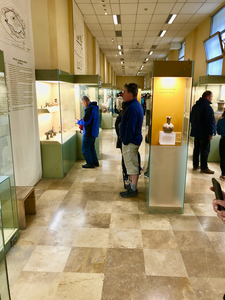



























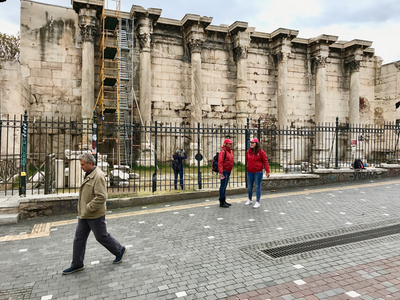







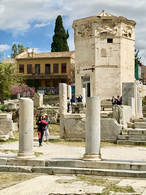



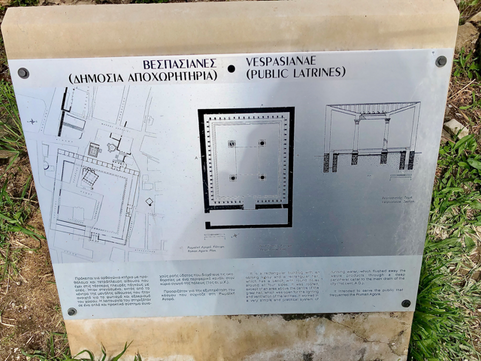











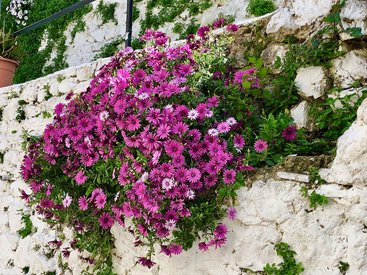

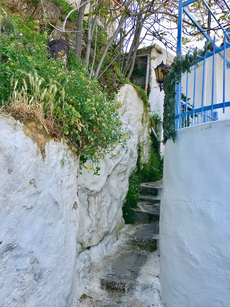



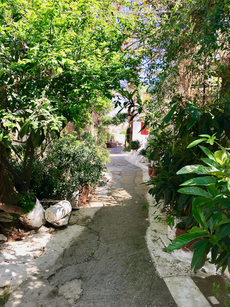


























Comments